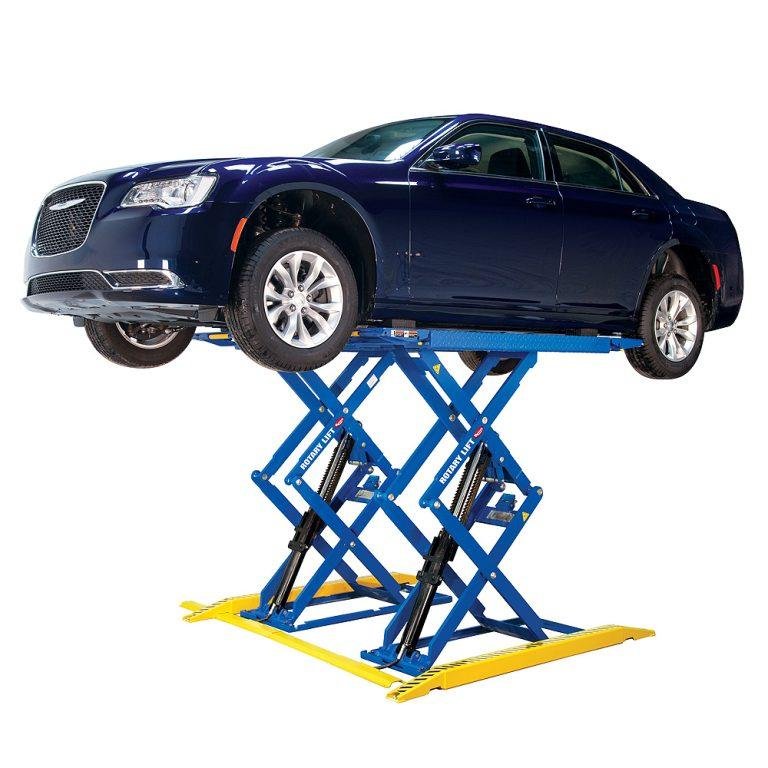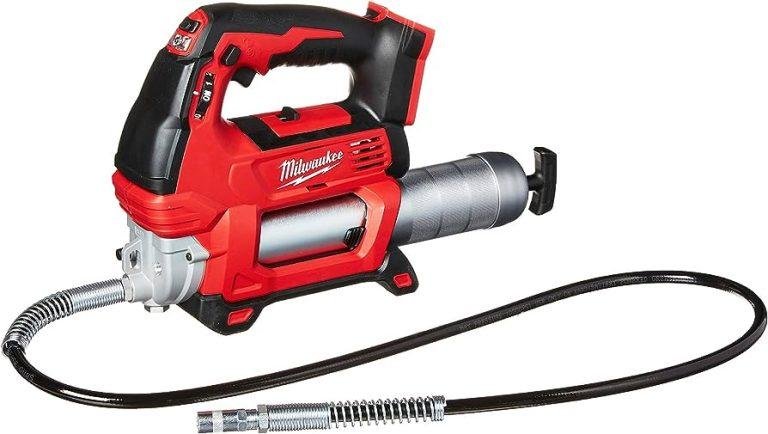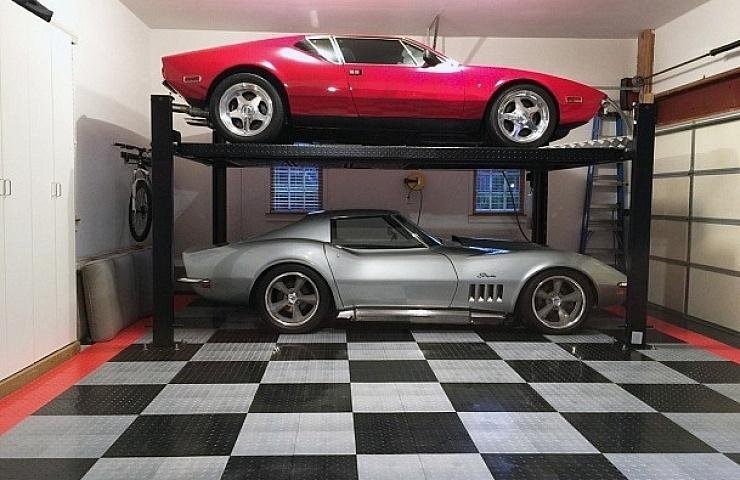A garage for a car lift needs to be at least 12 feet tall. A garage with a minimum height of 12 feet is required to accommodate a car lift, allowing enough clearance for the raised vehicle.
This ensures that you have enough space to safely lift and store your car. Having a car lift in your garage can be a convenient and space-saving solution, especially if you enjoy working on your own vehicles or simply need extra parking space.
However, it’s essential to have the proper height clearance to accommodate the car lift and the raised vehicle. With a minimum height of 12 feet, you can confidently install a car lift without worrying about any clearance issues. This provides sufficient space and allows you to work on your vehicle comfortably and without restrictions.

Credit: www.edmunds.com
Why Garages Need To Be Tall Enough For Car Lifts
Garages should be tall enough for car lifts to ensure smooth operation. The optimal height typically ranges between 12 to 16 feet, allowing sufficient space for vehicles to be lifted off the ground safely and comfortably. This ensures convenience and ease when working on cars within the garage.
Importance Of Having The Right Height For A Car Lift
When it comes to installing a car lift in your garage, having the right height is crucial. Without adequate clearance, you won’t be able to properly lift your vehicle and perform maintenance tasks effectively. Here are the key factors to consider when determining the height requirement for your garage.
Factors To Consider When Determining The Height Requirement
- Vehicle clearance: One of the primary considerations is ensuring that your vehicle can fit comfortably under the lifted car. Measure the height of your tallest vehicle, including any additional modifications like roof racks, and add a few inches for safety.
- Lift height capacity: Different car lifts have varying height requirements. Make sure to check the specifications of the lift you plan to install and ensure that it fits within the height of your garage. Remember to consider the height needed for both the lowered and raised positions of the lift.
- Safety considerations: Safety should always be a top priority when it comes to using car lifts. Ensure that there is enough clearance between the raised vehicle and the ceiling to prevent any accidents or damage. Additionally, consider any overhead fixtures or structures that may interfere with the lifted car.
To summarize, having the right height for a car lift in your garage is crucial for effective maintenance and vehicle clearance. By considering factors such as vehicle clearance, lift height capacity, and safety considerations, you can ensure a safe and efficient lifting experience in your garage.
So be sure to measure carefully and choose a car lift that fits within the height requirements of your garage.
Ideal Height For Residential Garage Car Lifts
The ideal height for residential garage car lifts varies, but generally, a minimum ceiling height of 9 to 10 feet is recommended to accommodate most car lifts and ensure sufficient clearance. However, it’s crucial to consult with experts and consider the specific dimensions and requirements of the car lift being installed to determine the exact height needed for your garage.
If you’re planning to install a car lift in your residential garage, it’s important to consider the ideal height required for different types of lifts. By ensuring that your garage meets the necessary height requirements, you can safely and efficiently use a car lift to maximize your storage and maintenance capabilities.
In this section, we will discuss the minimum height required for single-post lifts, the recommended height for two-post lifts, and guidelines for four-post lifts.
Minimum Height Required For Single-Post Lifts:
- Single-post lifts, also known as post lifts or column lifts, are a popular choice for maximizing space in smaller garages.
- To accommodate a single-post lift, the minimum ceiling height should be around 12 feet.
- This height ensures that the vehicle can be raised to a suitable height without any clearance issues.
Recommended Height For Two-Post Lifts:
- Two-post lifts are commonly used in residential garages due to their versatility and ease of use.
- For a standard two-post lift, the recommended ceiling height is approximately 14 feet.
- This extra height allows for adequate clearance when lifting vehicles, ensuring a safe working environment.
Guidelines For Four-Post Lifts:
- Four-post lifts are known for their stability and ability to handle heavier vehicles.
- To accommodate a four-post lift, the minimum ceiling height should be around 9 to 10 feet.
- This height allows for sufficient clearance when raising and lowering vehicles.
- Additionally, an extra foot of height should be considered if you plan to store taller vehicles, such as trucks or suvs.
The ideal height for residential garage car lifts varies depending on the type of lift you choose. While single-post lifts require a minimum height of 12 feet, two-post lifts typically require a ceiling height of 14 feet. Four-post lifts have lower height requirements, with a minimum of 9 to 10 feet.
By ensuring that you have the appropriate ceiling height, you can safely and efficiently use a car lift in your garage.
Assessing Existing Garage Heights For Car Lift Installation
When it comes to installing a car lift in your garage, it is crucial to assess the existing garage heights to determine the needed clearance. Find out how tall your garage needs to be for a smooth car lift installation with this informative guide.
Installing a car lift in your garage can be a game-changer, providing additional storage space and making maintenance tasks much easier. However, before you dive into the installation process, it’s essential to assess your garage’s height and determine if it can accommodate a car lift.
Here’s what you need to consider:
Measuring The Available Height
To begin, measure the distance from the floor to the ceiling in your garage. This will give you an idea of the vertical space you have to work with. Keep in mind that the measurement should be taken at the lowest point, as some garages have sloping floors.
Clear Of Obstacles
Take note of any overhead obstacles that may limit the height available for a car lift. Common obstacles include light fixtures, ventilation ducts, and garage door openers. Ensure that there is sufficient clearance for the car lift and that it won’t interfere with these structures.
Considering The Ceiling Height
Confirm the ideal ceiling height required for the car lift you plan to install. Different car lifts have varying height requirements, typically ranging from 9 to 14 feet. Ensure that your garage ceiling is high enough to accommodate the car lift without any issues.
Evaluating The Feasibility And Limitations
Once you have measured the available height and considered any potential obstacles, evaluate the feasibility of installing a car lift in your garage. Take into account whether your garage meets the minimum height requirements and if any modifications would be necessary to make it suitable for a car lift.
Modifications Required For Low-Ceiling Garages
If your garage has a low ceiling height, you may need to make certain modifications to accommodate a car lift. This could involve raising the ceiling, excavating the floor to lower it, or even installing a recessed car lift. These modifications may add to the cost and complexity of the installation, so it’s important to carefully assess the feasibility and budget accordingly.
Addressing Structural Integrity Concerns
Installing a car lift in your garage puts additional stress on the structure. It’s crucial to ensure that the existing structure can handle the weight and force exerted by the car lift without compromising its integrity. Consult with a structural engineer or a professional installer to assess the strength of your garage and make any necessary reinforcements.
By carefully assessing your garage’s height, clearance, and structural integrity, you can determine whether it can accommodate a car lift. Remember to consult with professionals if needed to ensure a safe and successful installation.
Overcoming Space Limitations For Garage Car Lifts
For those wondering how tall a garage needs to be for a car lift, space limitations can be overcome with proper planning and organization. By measuring and optimizing available vertical clearance, it is possible to accommodate a car lift in garages with varying heights.
Garage space can often be a limiting factor when it comes to installing a car lift. However, there are several solutions available to overcome these space limitations and still make way for a car lift in your garage.
Solutions For Low-Ceiling Garages:
- Low-rise car lifts: These lifts are designed specifically for garages with low ceilings. They provide enough clearance to lift your car without requiring excessive headroom.
- Portable car lift options: Portable car lifts are a fantastic choice for tight spaces. They are lightweight, easy to move, and can be stored when not in use. Portable lifts typically do not require installation and can be a great solution for those who need temporary lifting capabilities.
- Compact car lift alternatives: Compact car lifts are designed to take up minimal space in your garage. They offer a smaller footprint while still providing the necessary lifting capacity for your car. These lifts may be a great option if you have limited space to work with.
Scissor Lifts:
- Scissor lifts are an excellent choice for garages with limited headroom. They operate vertically, enabling them to fit into tighter areas. These lifts are hydraulic or electric-powered and can be easily maneuvered within your garage.
Mid-Rise Car Lifts:
- Mid-rise car lifts are a suitable choice if you have slightly more headroom in your garage. They provide a moderate lift height and are an excellent option for performing maintenance or accessing the underside of your vehicle.
If you’re faced with space limitations in your garage but still desire a car lift, there are several solutions available. From low-rise car lifts and portable options to compact alternatives and scissor lifts, you can find a lift that fits your needs and garage space.
So go ahead and elevate your car without compromising on space!
Safety Considerations For Garage Car Lifts
Garage car lifts require a minimum ceiling height for safe operation. It is recommended to have a garage with a height of at least 12 feet to accommodate a car lift.
When it comes to installing a car lift in your garage, safety should be your top priority. Proper installation and usage guidelines, maintaining a safe working environment, providing adequate clearance for vehicle entry and exit, positioning of lift components, and regular maintenance and inspections are key factors to consider.
Let’s delve into each of these aspects in more detail:
Proper Installation And Usage Guidelines
- Hire a professional installer who is experienced with car lifts to ensure proper installation.
- Follow the manufacturer’s instructions and guidelines for installation and usage.
- Ensure that the lift is securely anchored to the floor to prevent accidents or instability.
- Familiarize yourself with the lift’s weight capacity and avoid exceeding it.
- Always engage the safety mechanisms when using the lift, such as safety locks and secure attachment points.
Maintaining A Safe Working Environment
- Clear the surrounding area of any clutter or obstacles that may interfere with the operation of the car lift.
- Keep the floor free from oil spills and other slippery substances that could cause accidents.
- Proper lighting is essential to ensure visibility when working with the car lift.
- Use caution and wear appropriate safety gear, such as gloves, goggles, and sturdy footwear, when operating the lift.
Adequate Clearance For Vehicle Entry And Exit
- Measure the height of your vehicle and ensure that your garage has sufficient vertical space to accommodate the raised height of the car lift.
- Take into account any roof beams, light fixtures, or obstructions that may limit the height clearance.
- Consider the overall dimensions of your vehicle, including any modifications, to ensure ease of entry and exit with the lift in place.
Positioning Of Lift Components
- Pay attention to the placement and alignment of lift components, such as arms and pads, to ensure proper engagement with the vehicle.
- Verify that the lifting points of your vehicle align with the lifting arms of the car lift.
- Double-check the locking mechanisms of the lift to prevent accidental release or disengagement during operation.
Regular Maintenance And Inspections
- Schedule regular maintenance sessions with a qualified technician to keep your car lift in optimal working condition.
- Inspect the lift before each use to ensure all components are functioning properly and there are no signs of wear or damage.
- Lubricate moving parts regularly to prevent friction and maintain smooth operation.
- Keep a record of maintenance and inspections for future reference.
By adhering to these safety considerations, you can ensure the safe and efficient use of a car lift in your garage. Remember, regular maintenance, proper usage, and a safe working environment are crucial for the longevity and functionality of your car lift.
Stay vigilant and prioritize safety at all times.
Hiring Professional Help For Garage Car Lift Installation
Thinking of installing a car lift in your garage? Consider the height requirements first. Hiring professional help ensures the correct dimensions are met for a successful garage car lift installation.
Are you considering installing a car lift in your garage but don’t know where to start? Hiring a certified installer is the first step to ensuring a smooth and successful installation process. Here are some reasons why enlisting professional help is essential:
- Expertise and experience: Certified installers have the necessary knowledge and skills to handle the complexities of garage car lift installation. They understand the structural requirements, electrical connections, and safety regulations involved in the process.
- Safety assurance: A certified installer will prioritize safety measures to protect you and your vehicle during and after the installation. They will ensure that the lift is securely installed, minimizing the risk of accidents or damage.
- Proper equipment and tools: Professional installers come equipped with the right tools and equipment needed for the job. They are familiar with the latest industry standards and will use high-quality materials to ensure a reliable and durable installation.
- Time and efficiency: Installing a car lift requires precision and attention to detail. By hiring a professional, you can save valuable time and avoid potential mistakes or delays. They will work efficiently to complete the installation promptly.
- Warranty and support: Professional installers often offer warranties on their work, providing you with peace of mind. In case any issues arise after the installation, they can provide necessary assistance and support.
Obtaining Necessary Permits And Inspections:
Before starting the installation process, it’s crucial to obtain the necessary permits and undergo inspections to ensure compliance with local building codes. Here’s what you need to know:
- Research local requirements: Check with your local building department or authorities to understand the specific permits and inspections needed for installing a car lift in your garage. Different jurisdictions may have varying regulations.
- Permit application process: Familiarize yourself with the permit application process, including the documentation, fees, and timelines involved. Submit all required forms and information accurately to avoid any delays.
- Inspection procedures: Once the installation is complete, the relevant authority will schedule an inspection to ensure that the car lift meets safety standards and local regulations. Cooperate with the inspector and address any deficiencies, if necessary.
- Compliance and legal considerations: Following the permit and inspection procedures is not just important for the safety of the installation but also to remain compliant with local laws. Non-compliance can lead to fines, penalties, or even legal issues in the future.
Cost Considerations And Budgeting:
Installing a car lift in your garage involves financial planning and budgeting. To help you make informed decisions, consider the following factors:
- Equipment and installation costs: The cost of a car lift can vary depending on factors such as its capacity, features, and brand. Obtain quotes from multiple suppliers or installers to compare prices and choose the option that fits your needs and budget.
- Additional expenses: Besides the lift itself, remember to account for other expenses like electrical work, reinforcement of garage structure, permits, and inspections. These additional costs may vary based on your specific requirements and local regulations.
- Long-term savings: While upfront costs may seem significant, installing a car lift can provide long-term cost savings by eliminating the need for off-site parking or storage rentals. Evaluate the financial benefits in the context of your current and future vehicle needs.
- Return on investment: Consider the potential resale value of your property with a garage car lift. The added convenience and functionality can attract potential buyers and increase the overall value of your home.
By engaging a certified installer, obtaining necessary permits and inspections, and considering the costs involved, you can ensure a successful garage car lift installation while adhering to the required guidelines and regulations.
Conclusion: Finding The Right Height For Your Garage Car Lift
Determining the ideal height for your garage car lift depends on various factors, such as the size of your vehicle and the specific lift model you choose. It’s important to consider both the lift’s dimensions and the ceiling height in order to ensure sufficient clearance and a safe working environment.
Importance Of Proper Height For Car Lift Functionality And Safety
The height of your garage is an essential consideration when installing a car lift. It determines whether the lift will fit properly and function safely. Let’s delve into the significance of the right height for your garage car lift.
- Maximum clearance: A car lift requires sufficient clearance to raise the vehicle without hitting the ceiling. Choosing the appropriate height ensures ample space for the lift to operate smoothly and avoid any accidents or damages.
- Lift types and dimensions: Different car lift types have varying height requirements. Understanding the specific dimensions of the lift you plan to install is crucial in determining the necessary garage height to accommodate it correctly.
- Car sizes and weights: Consider the type of vehicle you intend to lift in your garage. Larger vehicles, such as trucks or suvs, will require more headroom than smaller cars. Take into account the height and weight of the vehicles to ensure your garage can accommodate them safely.
- Safety precautions: A garage with insufficient height for a car lift can pose serious safety risks. Inadequate clearance may lead to vehicle damage, accidents, or even injuries. Ensuring the proper height for your car lift promotes a safer and more secure lifting experience.
- Future considerations: While you may not currently own a vehicle that requires a car lift, it’s wise to plan for the future. Consider the possibility of purchasing a larger vehicle or using the lift for other purposes such as maintenance or repairs. By selecting a garage height suitable for a potential car lift, you can avoid future renovation costs and inconveniences.
- Regulations and building codes: Always consult local regulations and building codes before installing a car lift in your garage. These codes often include specific requirements regarding garage height, clearances, and safety standards. Adhering to these guidelines ensures compliance and maintains a safe working environment.
Finding the right height for your garage car lift is crucial for optimal functionality and safety. Considering factors such as maximum clearance, lift types and dimensions, vehicle sizes and weights, safety precautions, future considerations, and local regulations are essential in determining the required garage height.
By taking these factors into account, you can enjoy a safe and efficient car lifting experience in your garage.
Frequently Asked Questions For How Tall Does A Garage Need To Be For A Car Lift?
How High Does A Garage Ceiling Need To Be For A Lift?
The minimum garage ceiling height required for a lift is typically about 11 feet. Having sufficient height allows for the safe operation of the lift without any obstruction. This ensures that the vehicle can be fully lifted and maneuvered without hitting the ceiling.
It is important to measure the height of your garage and consider any potential obstacles such as lighting fixtures or beams that may reduce the available clearance. Additionally, you should account for the added height of the vehicle when it is lifted and make sure that it fits comfortably within the available space.
So, before installing a lift in your garage, make sure your ceiling is at least 11 feet high and take into account any obstructions that may affect the overall clearance.
Can A Car Lift Fit In A 10 Foot Ceiling?
Yes, a car lift can fit in a 10-foot ceiling. However, it’s important to consider the dimensions of the car lift and the available space. Most standard car lifts have a height range of around 10 to 12 feet, which means a 10-foot ceiling should be sufficient.
However, you need to ensure that there is enough clearance for the car lift to fully extend without hitting the ceiling. It’s crucial to measure the height of the car lift and compare it to the available space. Additionally, you should consult with a professional installer to ensure that the car lift can be safely installed in your specific garage or workspace.
By taking these steps, you can determine whether a car lift can be accommodated in a 10-foot ceiling.
What Is The Minimum Garage Height To Stack Cars?
The minimum garage height needed to stack cars is typically around 9-10 feet. This allows for enough clearance to accommodate the height of two stacked vehicles. To ensure safe and secure stacking, it is important to consider additional factors such as vehicle height, roof clearance, and access for loading and unloading.
Providing ample headroom and space between vehicles is crucial to prevent any damage or accidents. Therefore, it is recommended to consult with professionals or refer to vehicle manufacturers’ specifications to determine the appropriate minimum garage height for stacking cars.
How Thick Should A Garage Floor Be For A Lift?
A garage floor for a lift should be at least 6 inches thick to provide sufficient strength and support.
Conclusion
The height requirement for a garage with a car lift varies depending on the type of lift and the vehicles you plan to store. It is generally recommended to have a minimum ceiling height of 12 feet for most car lifts, allowing enough clearance for the lifting mechanism and the vehicle itself.
However, some specialty lifts may require additional ceiling height. Before installing a car lift, it is crucial to carefully measure the dimensions of your garage and consult with professionals to ensure the proper height is met. As you consider investing in a car lift, take into account your specific needs, the type of vehicles you have, and the available space in your garage.
By doing so, you can create a safe and functional environment to lift and store your vehicles conveniently within your garage.





